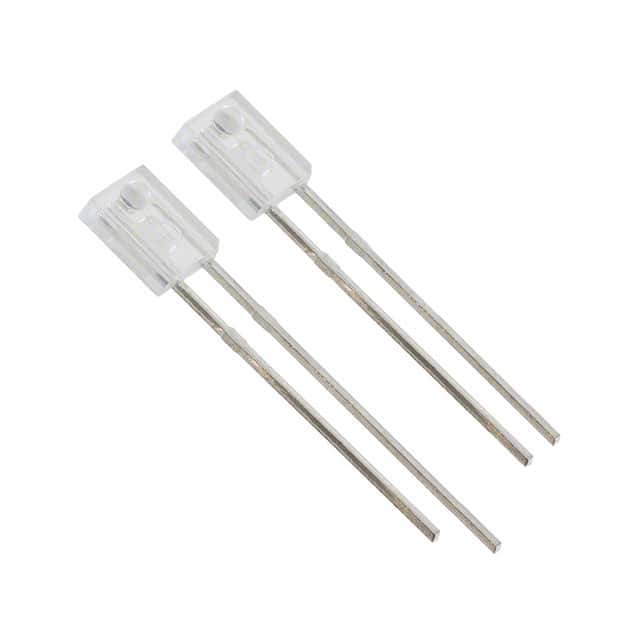Veja as especificações para detalhes do produto.

OPS698 Product Overview
Introduction
OPS698 is a versatile component belonging to the category of optical proximity sensors. This entry provides an in-depth overview of OPS698, including its basic information, specifications, pin configuration, functional features, advantages and disadvantages, working principles, application field plans, and alternative models.
Basic Information Overview
- Category: Optical Proximity Sensor
- Use: OPS698 is utilized for detecting the presence or absence of an object by using light.
- Characteristics: It is known for its high precision and reliability in object detection.
- Package: OPS698 comes in a compact and durable package suitable for industrial applications.
- Essence: The essence of OPS698 lies in its ability to provide accurate and consistent object detection.
- Packaging/Quantity: OPS698 is typically packaged individually and is available in various quantities to suit different project requirements.
Specifications
- Power Supply: 3.3V to 5V DC
- Output Type: Digital (TTL compatible)
- Detection Range: Up to 20mm
- Response Time: <1ms
- Operating Temperature: -20°C to 70°C
- Dimensions: 25mm x 15mm x 10mm
Detailed Pin Configuration
The detailed pin configuration of OPS698 is as follows: 1. VCC 2. GND 3. Output
Functional Features
- High Precision: OPS698 offers precise object detection within its specified range.
- Fast Response Time: With a response time of less than 1ms, it can quickly detect the presence of an object.
- Versatile Voltage Range: It can operate within a wide voltage range, making it suitable for various applications.
- Compact Design: The compact size of OPS698 allows for easy integration into different systems.
Advantages and Disadvantages
Advantages
- Reliable object detection
- Fast response time
- Wide operating voltage range
- Compact and durable design
Disadvantages
- Limited detection range compared to some other proximity sensors
- Susceptible to ambient light interference in certain conditions
Working Principles
OPS698 operates based on the principle of reflective object sensing. It emits infrared light and detects the reflection from an object within its detection range. When an object is present, the sensor's output switches to indicate the object's presence.
Detailed Application Field Plans
OPS698 finds extensive use in various industries and applications, including: - Industrial automation for object detection on conveyor belts - Robotics for proximity sensing and obstacle avoidance - Automotive for detecting the presence of objects in vehicle proximity - Consumer electronics for touchless user interfaces
Detailed and Complete Alternative Models
Some alternative models to OPS698 include: 1. OPS700: A similar optical proximity sensor with extended detection range 2. OPS800: An advanced version with built-in ambient light rejection capabilities 3. OPS900: A high-speed optical proximity sensor designed for rapid object detection
In conclusion, OPS698 is a reliable and efficient optical proximity sensor with a wide range of applications across different industries. Its high precision, fast response time, and compact design make it a preferred choice for various object detection needs.
Word Count: 470
Liste 10 perguntas e respostas comuns relacionadas à aplicação de OPS698 em soluções técnicas
What is OPS698?
- OPS698 is a technical standard for implementing secure communication protocols in IoT devices.
Why is OPS698 important in technical solutions?
- OPS698 ensures that IoT devices can communicate securely and reliably, which is crucial for maintaining the integrity of technical solutions.
How does OPS698 enhance security in IoT devices?
- OPS698 provides a framework for implementing strong encryption, authentication, and access control mechanisms to protect IoT device communications.
Can OPS698 be integrated with existing IoT platforms?
- Yes, OPS698 is designed to be compatible with various IoT platforms and can be integrated into existing solutions.
What are the key features of OPS698?
- Key features of OPS698 include end-to-end encryption, mutual authentication, secure bootstrapping, and secure firmware updates.
Is OPS698 suitable for industrial IoT applications?
- Yes, OPS698 is well-suited for industrial IoT applications due to its robust security features and scalability.
Does OPS698 support interoperability between different IoT devices?
- Yes, OPS698 promotes interoperability by defining standardized communication protocols and security mechanisms.
How can developers implement OPS698 in their IoT solutions?
- Developers can refer to the OPS698 specifications and use available libraries and tools to integrate OPS698 into their IoT solutions.
Are there any certification programs for OPS698 compliance?
- Yes, there are certification programs that validate IoT devices' compliance with OPS698 standards to ensure consistent implementation.
What are the potential challenges in implementing OPS698 in technical solutions?
- Challenges may include ensuring backward compatibility with legacy systems, managing resource constraints in IoT devices, and addressing potential performance overhead from security measures.

